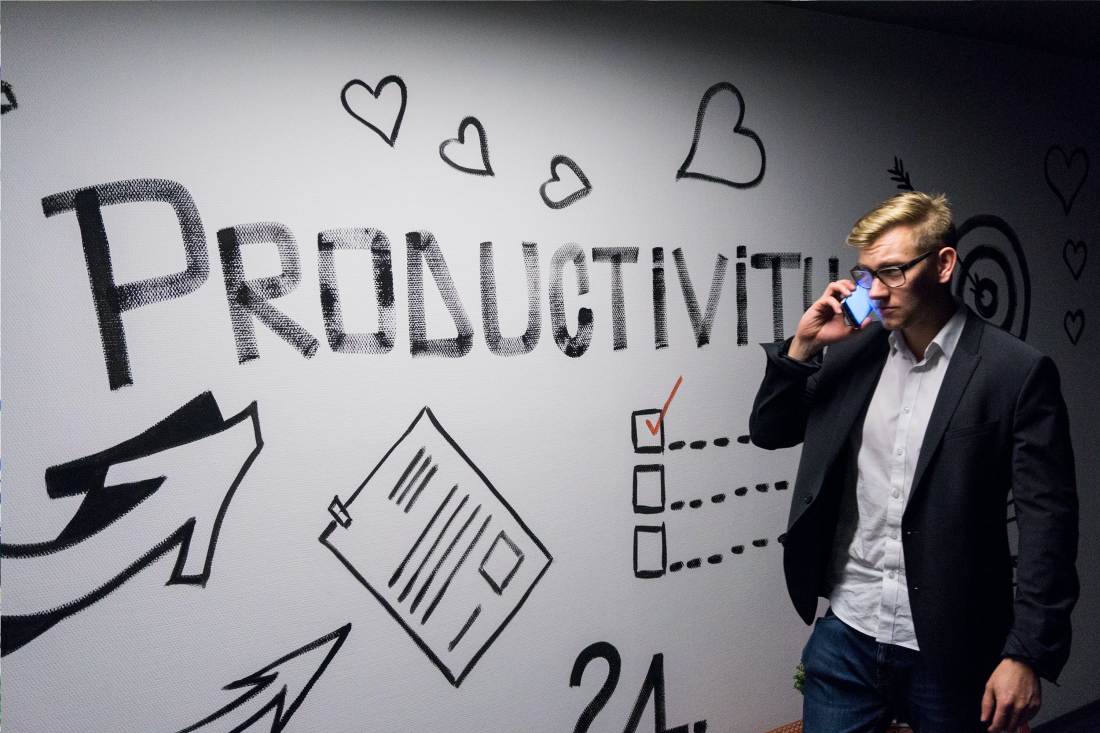Table of Contents Show
Boosting workforce productivity is crucial for the success of any organization. In this blog post, we will explore strategies that can help you maximize productivity and achieve your goals. From setting clear objectives to providing adequate resources, we will provide actionable tips to enhance efficiency and motivation in the workplace. By implementing these strategies, you can create a high-performing team that drives results and propels your organization forward. Let’s dive in!
What does workforce productivity mean?
Workforce productivity refers to the efficiency and effectiveness with which a team or organization utilizes its resources to achieve its objectives. It measures the output or results achieved per unit of input, such as time, effort, or resources.
A highly productive workforce is able to accomplish more in less time, leading to increased profitability and success for the organization.
Why is workforce productivity important?
There are several reasons why workforce productivity is important for the success of an organization:
1. Increased profitability: A highly productive workforce can accomplish more in less time, leading to increased output and profitability. This can give your organization a competitive edge in the market.
2. Cost savings: Productive employees can complete tasks efficiently, reducing the need for overtime or additional resources. This can help save costs and improve the bottom line.
3. Enhanced customer satisfaction: When your team is productive, they can deliver high-quality products or services to customers in a timely manner. This can improve customer satisfaction and loyalty.
4. Employee engagement and satisfaction: When your workforce is motivated and productive, they will be more engaged in the work they do, and this will improve their work satisfaction.
Strategies for boosting workforce productivity:
In today’s competitive business landscape, maximizing workforce productivity is essential for driving success and staying ahead of the curve. By implementing effective strategies, managers and entrepreneurs can enhance their team’s output, efficiency, and overall performance. Here are some proven strategies for boosting workforce productivity:
a. Set Clear Goals and Expectations: Establishing clear and specific goals for individual employees and the team as a whole is crucial. This provides clarity and direction, enabling employees to prioritize their tasks effectively. Clearly communicate expectations regarding quality, deadlines, and performance to ensure everyone is aligned and working towards a common objective.
b. Provide Ongoing Training and Development: Investing in the professional development of your workforce is vital for productivity improvement. Offer opportunities for employees to enhance their skills through training programs, workshops, seminars, or online courses. By continuously developing their knowledge and abilities, employees become more proficient, confident, and efficient in their roles.
c. Foster a Positive Work Environment: A positive work environment plays a significant role in boosting productivity. Encourage open communication, collaboration, and teamwork among employees. Celebrate achievements, acknowledge outstanding performance, and provide constructive feedback to motivate and inspire your workforce. Additionally, create a comfortable and ergonomic workspace to promote focus, well-being, and overall job satisfaction.
d. Implement Effective Time Management Techniques: Time management is a key factor in enhancing productivity. Encourage employees to prioritize tasks, set realistic deadlines, and eliminate time-wasting activities. Utilize productivity tools and techniques such as to-do lists, time blocking, and project management software to help streamline workflows, improve organization, and minimize distractions.
e. Encourage Work-Life Balance: Promoting work-life balance is crucial for increasing productivity and preventing burnout. Encourage employees to take regular breaks, use their vacation days, and maintain a healthy work-life integration. A well-rested and balanced workforce is more likely to be focused, energized, and motivated, leading to higher levels of productivity.
f. Foster Continuous Improvement: Emphasize a culture of continuous improvement within your organization. Encourage employees to share ideas, provide feedback, and suggest process enhancements. By fostering an environment that values learning and growth, you empower your workforce to innovate, find efficiencies, and contribute to ongoing productivity gains.
By implementing these strategies, managers, and entrepreneurs can effectively boost workforce productivity, drive efficiency, and achieve remarkable results. Prioritizing employee development, creating a positive work environment, and promoting effective time management can lead to a highly productive workforce that propels your business toward success. Productivity is closely linked to employee engagement and satisfaction. When employees feel productive and see the results of their work, they are more likely to be engaged and satisfied with their jobs.
How to measure workforce productivity?
Measuring workforce productivity is essential to evaluate the effectiveness of your strategies and identify areas for improvement. Here are a few methods to measure workforce productivity:
1. Output Measurement: This method focuses on quantifying the output produced by employees within a specific timeframe. It can be measured by the number of products manufactured, sales revenue generated, or tasks completed. Keep track of these metrics to assess productivity levels and monitor progress over time.
2. Quality Assessment: While output measurement is important, it’s equally crucial to assess the quality of work produced. This can be done through customer feedback, product/service reviews, or internal quality control processes. A high-quality output indicates that employees are not only productive but also delivering value to customers.
3. Time Management Analysis: Analyzing how employees spend their time can provide valuable insights into productivity levels. Use time tracking tools, project management software, or timesheets to monitor the time spent on different tasks. This analysis can identify time-wasting activities and help optimize workflows and resource allocation.
4. Employee Feedback: Engage with your employees through surveys, interviews, or performance evaluations to gather their perceptions of productivity. This feedback can provide valuable insights into their challenges, suggestions for improvement, and overall satisfaction levels. Regular communication with employees is crucial for understanding their needs and aligning productivity goals.
5. Comparison with Industry Benchmarks: Benchmarking your workforce productivity against industry standards or competitors can help you understand where you stand. Research industry reports, attend conferences, or join professional networks to gain insights on industry benchmarks. This comparison can highlight areas of improvement and motivate your workforce to strive for higher productivity levels.
Tips for improving workforce productivity:
Now that you know how to measure workforce productivity, here are some tips to improve it:
1. Set Clear Goals: Clearly define your goals and communicate them to your employees. When employees have a clear understanding of what is expected of them, they can align their efforts towards achieving those goals.
2. Provide Training and Development Opportunities: Invest in training and development programs to enhance the skills and knowledge of your employees. Continuous learning can improve productivity by equipping employees with the necessary tools to perform their tasks efficiently.
3. Foster a Positive Work Environment: A positive work environment can significantly impact productivity. Encourage open communication, teamwork, and recognition of achievements. Employees who feel valued and supported are more likely to be engaged and motivated to perform at their best.
4. Streamline Processes: Identify and eliminate any unnecessary steps or bottlenecks in your processes. Streamlining workflows can save time and improve efficiency, ultimately boosting productivity.
5. Use Technology to your Advantage: Leverage technology tools and software to automate repetitive tasks, improve collaboration, and streamline communication. This can free up time for employees to focus on more strategic and value-added activities.
6. Encourage Work-Life Balance: Promote work-life balance to prevent burnout and enhance productivity. Encourage employees to take breaks, prioritize self-care, and provide flexibility in work schedules when possible.
7. Implement Performance Incentives: Rewarding high-performing employees can be a powerful motivator. Consider implementing performance-based incentives such as bonuses, promotions, or recognition programs to encourage productivity and drive results.
8. Continuously Monitor and Evaluate: Regularly monitor and evaluate workforce productivity to identify areas for improvement. Use data analytics and performance metrics to track progress and make data-driven decisions.
9. Provide Feedback and Coaching: Offer constructive feedback and coaching to help employees improve their performance. Regular check-ins and performance reviews can provide valuable insights and support employee growth.
10. Foster a Culture of Continuous Improvement: Encourage a culture of continuous improvement where employees are encouraged to suggest and implement innovative ideas. Emphasize the importance of learning from mistakes and constantly finding ways to optimize processes.
So, measuring workforce productivity is crucial for managers and entrepreneurs who want to optimize their business operations. By understanding how to measure productivity and implementing strategies to improve it, you can drive higher performance, increase efficiency, and ultimately, achieve your business goals.
Conclusion
In conclusion, measuring and improving workforce productivity is essential for managers and entrepreneurs who want to maximize their business operations. By implementing strategies such as setting clear goals, providing training and development opportunities, streamlining processes, leveraging technology, promoting work-life balance, implementing performance incentives, continuously monitoring and evaluating progress, providing feedback and coaching, and fostering a culture of continuous improvement, businesses can drive higher performance, increase efficiency, and achieve their desired outcomes. Remember, productivity is not just about working harder, but about working smarter and optimizing resources. So, take the time to assess and improve your workforce productivity, and watch your business thrive.










